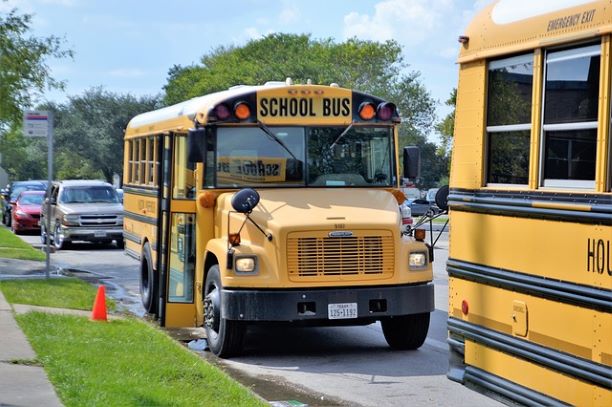
That title may seem morbid and extreme, but, unfortunately, it’s true. According to the National Highway Traffic Safety Administration, “More school-age pedestrians were killed from 6 a.m. to 7 a.m. and from 3 p.m. to 4 p.m. than any other hours of the day,” and “thirty-four (35%) of the school-age pedestrians killed in school transportation-related crashes from 2007 to 2016 were 8 to 13 years old.” Those numbers are alarming and worth our attention!
Naturally, parents want to be safe drivers to protect their precious cargo. But, sometimes parents simply do not know how dangerous the roads are in the hours before and after school. Hopefully, after sharing these stats with you today, you will strive to be a safer, wiser driver as kids head back to school. By following these back to school safety tips for drivers, you are already doing your part to protect kids.
Don’t Ignore School Zone Signs
Yes, you are busy. Yes, you are in a hurry. Yes, you should still obey the school zone speeds. No questions or excuses allowed. School zones extend from the doors of the school building to the blocks surrounding the school and nearby roads which have a high concentration of school-generated traffic. In basic terms, school zones are areas filled with back to school transportation and students. If you speed through a school zone, you put many lives in danger. Plus, speeding in a school zone can earn you a hefty speeding ticket.
Be on the Lookout
While in a school zone, you should always be on the lookout for students. These students may be on foot, on a bike, in a car, or on a bus. However, you should be on the lookout far earlier than when you notice the first school zone speed reduction sign. As back to school transportation ramps up, it is important to realize buses, walkers, carpools, and bike riders will be along your same route. Plus, if students live close enough to the school to walk, then they do not receive school bus transportation; therefore, these kids will be on foot or their bikes or in carpools long before the official school zone begins.
Know the School Bus Rules
Unfortunately, many drivers do not know the rules for when to stop for a school bus. This is because the rules vary from state to state. However, it is critical that you know and understand the laws regarding how to treat school buses in your state. AAA has a state-by-state guide. Ultimately, it is better to stop and wait when you are unsure than to attempt to pass a school bus and risk hitting a pedestrian or getting ticketed. School buses have flashing lights and stop signs for a reason!
Practice Safe Carpools from Pickup to Dropoff
First things first, if you choose to carpool, you are already practicing safe driving! According to the Atlanta Journal-Constitution, “Fewer people on the road equals fewer car crashes.” However, safe carpooling doesn’t stop as soon as you create your GoKid carpool. We advise GoKid users to practice safe carpooling by enforcing seat belt safety and safe ride behavior.
Additionally, those carpools taking students to and from school should pay careful attention to the school drop-off and pick-up rules. These rules, such as not unloading students across the street, are designed to keep kids safe while exiting and entering vehicles.
Don’t Text and Drive
Technology is our friend, but it can also be our enemy when it comes to driving. For example, using your phone for its GPS functions is great, but texting while driving turns your phone into your enemy. You are 23 times more likely to have a car crash if you text and drive. With busier roads from back to school transportation and kids walking and biking to school, it is not worth the risk to text while driving.







0